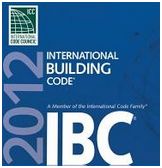Last October Mr. W of Park County Colorado ordered a new pole building kit package from Hansen Buildings.
Just like every quotation or Invoice we prepare, it lists specifically the “Design Criteria” for his specific building.
Included in this were:
The Building Code and edition (every three years a new edition of the code is published, often with significant changes from the prior edition).

Flat Roof Snow (also known as Pf) – which is calculated by applying a series of factors to the Ground Snow Load (Pg). In some cases, in exception to the way the codes are written, a Pf value is stated by a particular Building Department.
Design Wind Speed in miles per hour (mph) as a three second gust, as well as Wind Exposure.
Allowable Foundation Pressure, as well as the general soils types which the given pressure would be applicable to.
Seismic zone.
Maximum frost depth of this design.
Thermal factor (Ct) and whether the building is heated or unheated. This factor is one of the influencing values in the calculation of Pf from Pg.
Occupancy Category (I, II, III or IV) – each of which corresponds to a factor which will influence the magnitude of snow, wind and seismic forces which the building much be designed to withstand.
Every quote we provide includes this statement directly below the design criteria:
“You must confirm all code/design criteria with your Building Department prior to placing your order.
We recommend taking this page to your building department for them to verify all design criteria listed above.”
In ordering the building, the Purchaser must agree to the following as a portion of the terms and conditions:
Purchaser acknowledges verification/confirmation/acceptance of all Building Code, Plan and Design Criteria included on Instant Invoice. Information Purchaser has verified includes, but is not limited to: Applicable Building Code version, Occupancy Category, Ground (Pg) and Flat Roof (Pf) Snow Loads, Roof Snow Exposure Factor (Ce), Thermal Factor (Ct), basic Wind Speed (3 second gust) and Wind Exposure, Allowable Foundation Pressure, Seismic Zone and Maximum Frost Depth, as well as obtaining for Seller any unusual code interpretations, amendments or prescriptive requirements for non-engineered buildings which could affect this structure. If purchase is a non-engineered building, reasonable efforts have been made to assure structural adequacy, however no guarantee or warranty is made or provided by Seller as to whether this design actually meets with any applicable code or structural requirements. The ultimate responsibility for verification rests with Purchaser. Any costs due to changes or requests by Purchaser, Purchaser’s agents, or Building Officials to non-engineered plans will be borne by Purchaser, including any and all of Seller’s staff time for research, or any other reason, even if no changes are ultimately made. Staff time is billable at a minimum of $120 per person hour, with a one hour minimum.
Seller’s designs are all per specified Building Code and include the use of NDS Table 2.3.2 Load Duration Factors (Cd) as well as ASCE 7-05, Eq. 7-2 for slippery surfaces. Seller’s designs rely solely upon occupancy category and structural criteria for and at specified job site address only, which have been provided and/or verified by Purchaser. It is Purchaser’s and only Purchaser’s responsibility to ascertain the design loads utilized in this Agreement meet or exceed the actual dead loads imposed on the structure and the live loads imposed by the local building code or historical climactic records. Purchaser understands Seller and/or Seller’s engineer(s) or agents will NOT be contacting anyone to confirm.
Now if the above sounds harsh, keep in mind, we have provided buildings in all 50 states. There are over 7000 building permit issuing jurisdictions in the country and to keep absolutely current with any and all changes, is an impossible task.
Remember our good friend Mr. W from the beginning of this story? Mr. W’s county has on their website a form to complete, where they will verify the snow load criteria for anyone’s particular piece of property. While a pretty handy tool, it seems Mr. W did not use it.
He ordered a building, which we designed to the loads Mr. W confirmed he had verified. The plans were submitted and a permit to build was issued.
Now Mr. W has his building up and has called for final inspection. The inspector, in the field, notices the trusses are designed for a Pf of 50 psf (which matches what Mr. W ordered as well as the values on the approved plans). The problem…..the site is one where the flat roof snow load should have been 73 psf!
Mr. W now has a beautiful new building, which he cannot use. At least as it is presently built. The ultimate solution is going to involve a significant (as well as costly) repair to the trusses, as well as adding roof purlins between each purlin currently installed on the roof.
This is a case where an ounce of prevention (Mr. W having actually verified his loads as instructed) would have been well worth the pound of cure.
The question we sometimes get is, “why don’t you verify the loads for me?” Come back Monday and I’ll tell you why. Until then, think of the reasons we may or may not want to do this for you.






